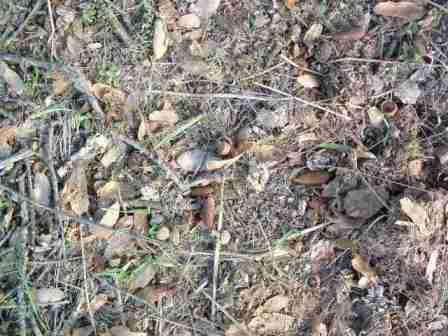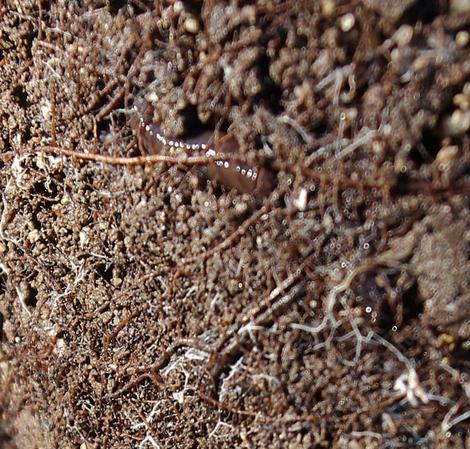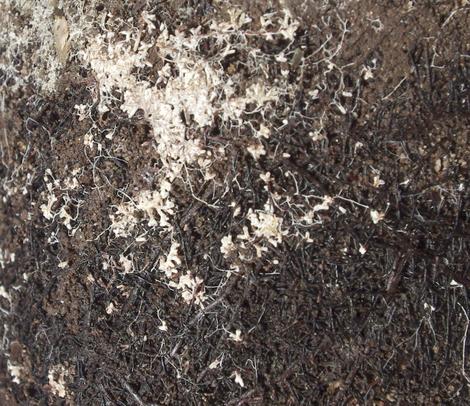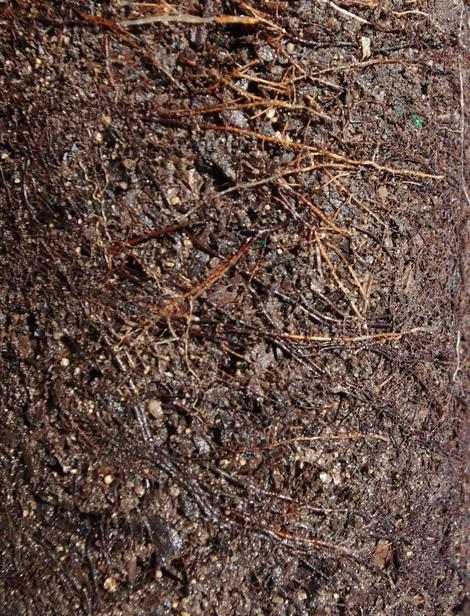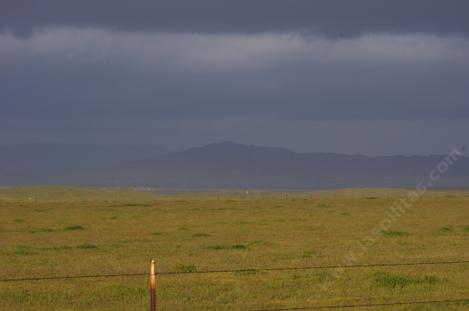Protecting the mycorrhizal fungus.
The disturbance of the subdivision is enough to create instability in the native community, never mind restoration of the mitigated areas. One of the researchers in Australia tested backyards for mycorrhizal presence, none. If the site is torn up, heavily amended, and plants form all over the place planted together the plant community is replaced with a ruderal (weed) community.
Hayman (1983) reported that passing the soil through a 9.5 mm (about 4 inches) sieve destroyed the soil mycorrhiza's hyphae and that the hyphae was needed to reestablish grasslands, spores did not work. If you till or otherwise work the soil below 12" you will kill most of the mycorrhiza. (Protecting it, will save you time and your customer's money.)
Do not amend the soil. Get restrictive on what is planted if the soil analysis comes back bad. Scraping off the alkaline domes to replace the top soil, amending to counteract the 'bad' soil, does not work. 2 inches of soil sulfur on top of 300 feet of a lime dome will not make the lime dome go away. Putting 12" of new soil on the old, kills the old soil, the top soil also dies, and you create an inversion layer at the interface. A triple whammy. If the soil report is bad, work with the plants that are in the same soil, same area, same plant community. Pick the best looking ones, have them grown and design them into the landscaping. You will save yourself lots of money.
If the site is covered with rocks, why not make a rock garden? If the site is on lime, why not make a lime-loving garden? (This is one soil/climate where you should look at the plants in the Mediterranean region that grow in the South European shrub basic community. You can get some more variety.)
If there is no community there, match the community you're going to create to the soil and climate. If you are given a subdivision that has nothing but bare dirt that is very acid with poor drainage along the coast, maybe you should look at making the whole design work around this. Try an oak or pine forest around the houses according to how much water you have, transitioning from the dry areas through 'communities' to the wetlands around a catch basin.
The healthier this soil and its plant communities becomes, the more suppression there is of the alien weeds and plant pathogens. "The greater the complexity of the biological community, [including the successional stages] the greater is its stability. At the very least, cultural practices should be selected that do not environmentally upset the suppressive communities of microorganisms that help defend plants against pathogens." (R.J. Cook) Even non-mycorrhizal plants benefit from this type planting often becoming partially mycorrhizal.
Sites high in metals will not support desert species, look to conifers and chaparral species to help.
Sites with moderately high salts support both desert and chaparral. As the salt level goes higher you have to use specific species, predominantly VAM desert/shadscale types or dryland halophytes. If the moisture is constant, certain non-mycorrhizal plants will be in the salty wet spots going to VAM in the dry spots.
One of the normal procedures for developing a house site is to pile the top soil in a pile until the house is done and then put it back. The soil community die after about four-ten years when you do this. If on the other hand, you plant it with the pioneer species, when you move it back the soil community will often be viable.
If the stockpiled soil is blended in with the remaining soil there will not be much soil activity. Spread the stock piled soil back as it came, hopefully only moving less than a 1 foot depth each time (a foot off and then back on) and when the soil is dry. Never work wet soil! Keep a native wildflower cover crop going on it as best as possible. Control the weeds, the system sees weeds like a human body sees a staph infection.
Do not change the soil levels if possible. Changing the level more than 1-2 feet will greatly alter or kill the soil ecosystem. This is the primary reason why oak trees die when you change the soil level.
Compacted soils are not desirable. Rolling a roller over a site can reduce/alter/destroy soil microflora. That is why there are wagon tracks in the desert after a 150 years and many freeways can support weedy species so well.
An interesting note: the only soils that are primarily bacterial based are soils where "modern" agriculture has occurred, sewage fields and disturbed weedy sites. Native soils are fungal based. Native systems and row crop type agricultural/weed systems are two opposing ecosystems. Edith Allen showed that after 150 years alien grasslands did not become native on their own.
